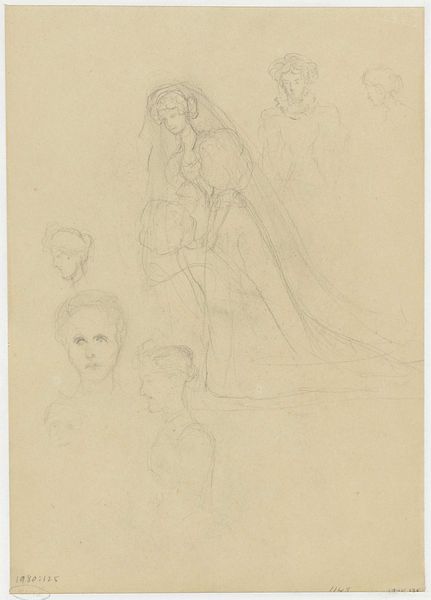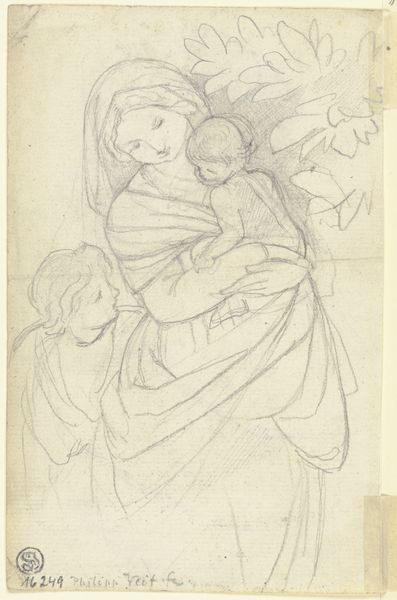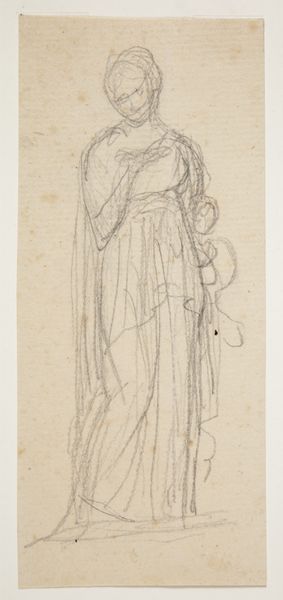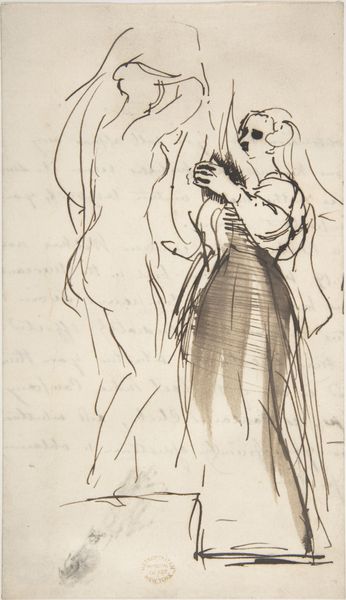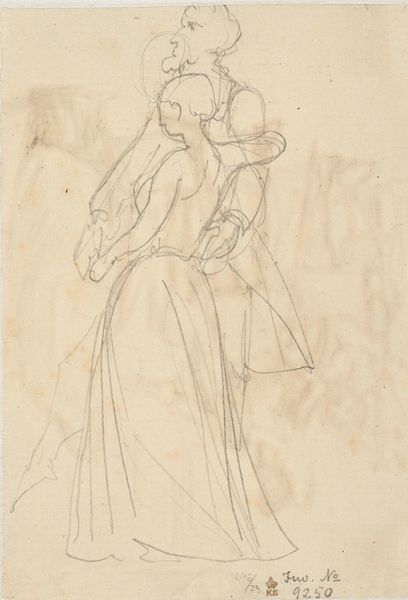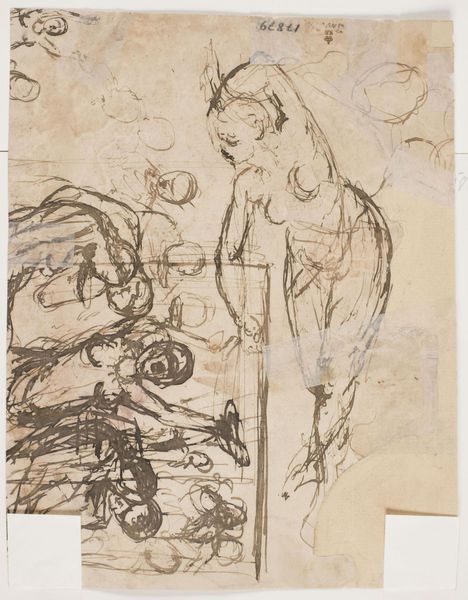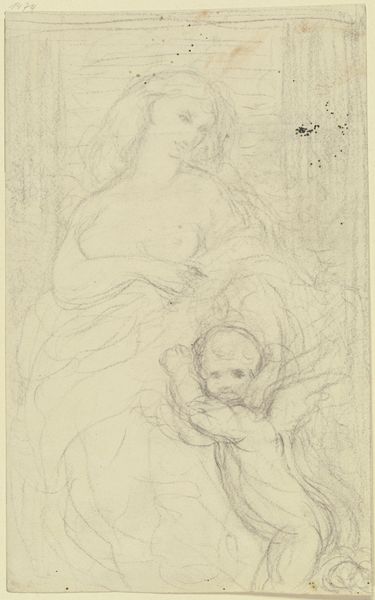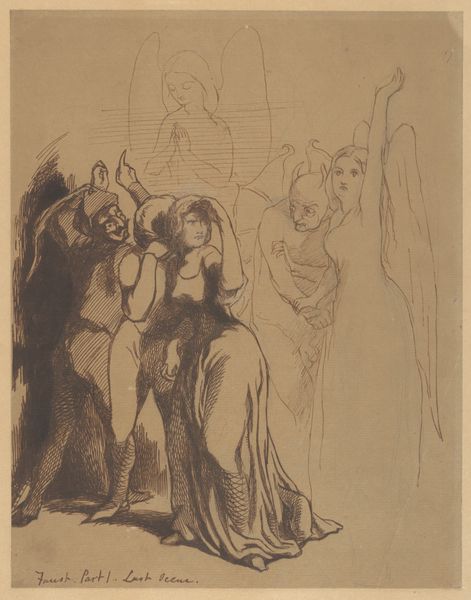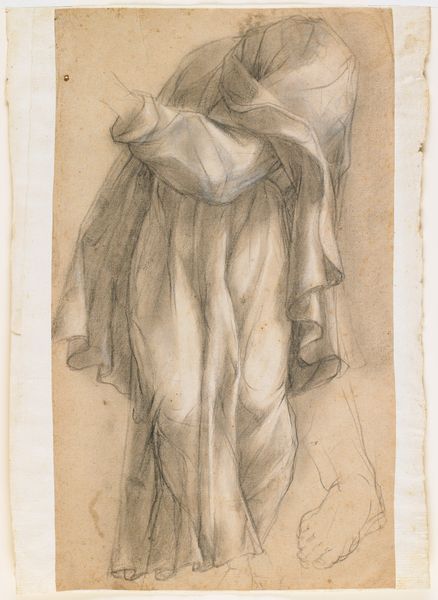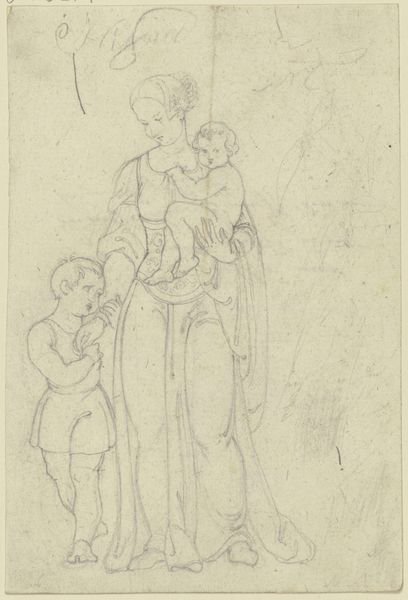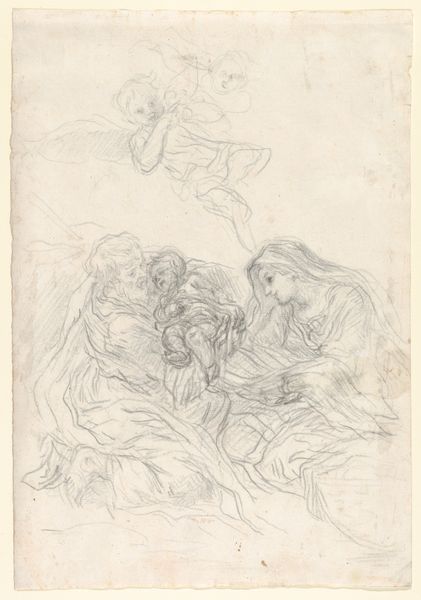
A Femme Fatale, Male Face and Man from Behind (recto); An Angel Descending Stairs (verso) 1836 - 1844
0:00
0:00
drawing, pencil
#
portrait
#
drawing
#
figuration
#
romanticism
#
pencil
#
history-painting
Dimensions: Sheet: 11 5/8 × 7 5/8 in. (29.5 × 19.4 cm) Mount: 13 9/16 × 10 1/16 in. (34.5 × 25.5 cm)
Copyright: Public Domain
Editor: So, this is "A Femme Fatale, Male Face and Man from Behind (recto); An Angel Descending Stairs (verso)" by Theodor Richard Edward von Holst, made sometime between 1836 and 1844 using pencil. The drawing has an eerie quality; what's striking is the contrast between the delicate figure of the woman and the looming, grotesque face behind her. What can you tell us about it? Curator: This pencil drawing allows us a privileged look into von Holst's artistic process. It highlights Romanticism's interest in both the ethereal and the monstrous. Consider how accessible pencils were in contrast to oils. How does this readily available material shape artistic expression? We might also think about the social context. The rise of industrialism made paper and pencils cheaper, opening art making to more people. This is no finished painting, carefully commissioned and presented. Editor: So, the medium itself democratizes art making in some way? Curator: Precisely. The immediacy of pencil on paper gives us direct access to the artist's thought process, to his labour, and his hand. It shows us a stage in the manufacture of imagery, stripping bare the artist’s concept and, perhaps, laying bare the Romantic concept of the artist's hand. Notice how von Holst utilizes varying degrees of pressure. Editor: I see how that impacts the figures; they almost emerge from the paper's surface. Curator: And what of the labor involved in the making of this image, a drawing, a reproduction and representation in itself? Do the repeated revisions diminish or add to the value of this work, particularly if we regard it as merely a step in a process? Editor: I hadn’t thought about it that way. It gives a new appreciation for what is, in essence, a sketch. Thanks for offering that insight! Curator: Indeed. Thinking about art through its materials and production can open up fascinating perspectives.
Comments
No comments
Be the first to comment and join the conversation on the ultimate creative platform.
